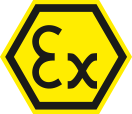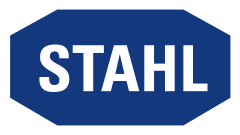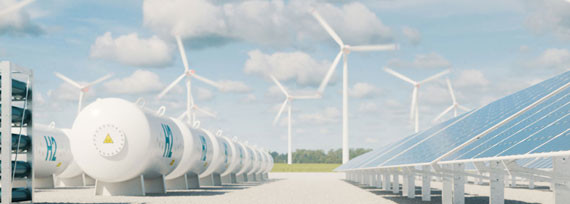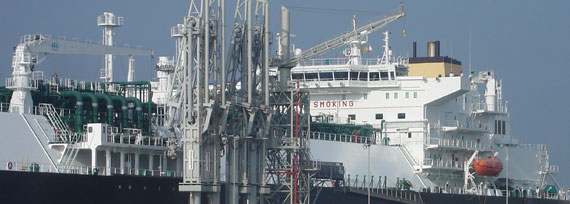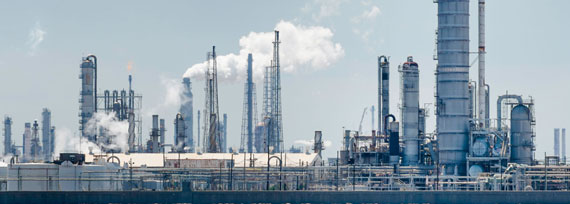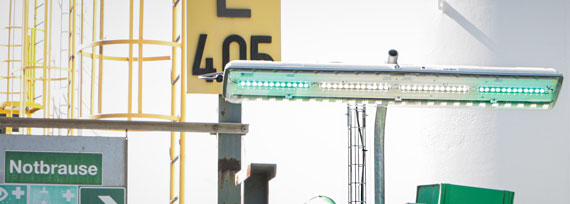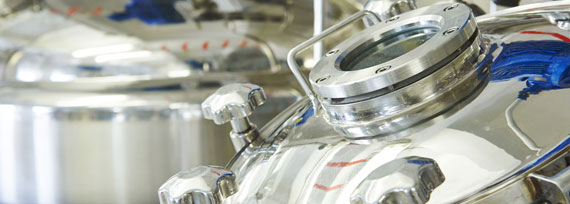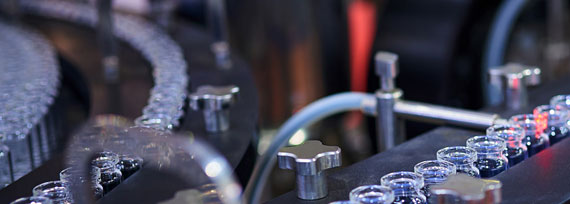TAILOR-MADE EX PROTECTION FOR A GAS PLANT IN SAUDI ARABIA
Guaranteeing safety during use for one of the largest energy companies in the world – as part of the continuous expansion of a gas plant in Saudi Arabia, R. STAHL was asked to supply custom Ex protection solutions in order to ensure that the new systems remain safe during operation. As one would expect under these unique ambient conditions, the customer's needs were extensive.
GROWING TOGETHER WITH EX PROTECTION IN THE GAS INDUSTRY
The expansion of the gas plant involved the inclusion of additional systems for processing raw gas. These included inlet systems, two gas processing lines, flare gas recuperation systems, and electric and non-electric supply systems. The new systems are currently being commissioned in a step-by-step process. Once this is complete, they will do their part in overall gas production, thereby taking their place among the leading gas processing systems worldwide.
And R. STAHL is also part of this success story – the customer requested five Ex p control panels in accordance with IECEx for Zone 2. With tailor-made solutions, the explosion protection expert established a basis for the safe operation and long-term success of the new systems, located in the middle of the desert.

INDESTRUCTIBLE CONTROL AND DISTRIBUTION SYSTEMS
These control systems are located outside; as a result, they require special protection against the extreme ambient temperatures, which can reach up to 55 °C. Accordingly, they also require a high level of IP protection, IP 66. R. STAHL has fulfilled these requirements by providing additional protection covers – not only on top, but on rear and both side as well. Keeping them cool is just as important. Integrated vortex cooling, which uses compressed air to cool the enclosure, reliably ensures that there is no risk of overheating. Another unique feature of the enclosure is that it is 3 mm thick, rather than the conventional thickness of 2 mm. The R. STAHL control systems made of stainless steel (SS316L) also guarantee optimum corrosion resistance.
UNIQUE CUSTOMER REQUIREMENTS? WE'RE ALL EARS
Everything under control in a hazardous area: KVM systems connect the keyboard, video and mouse connections on a workstation in a safe area with an explosion-protected area. On the basis of the customer's strict requirements and the high outside temperatures, the R. STAHL KVM system was designed using the SHARK device platform; additional measures even allowed them to be positioned in the panel doors themselves.
KVM systems from the SHARK device platform are extremely robust and resistant to shocks, vibrations and seawater. They are perfectly designed for use in extreme temperatures ranging from -40 °C to +65 °C. The display and function keys are well-protected behind a chemically hardened and sunlight-readable glass screen. In this case, the folding keyboard was particularly beneficial. When the customer does not need the keyboard, it can easily be folded away, ensuring that it is protected against dirt, sandstorms or similar hazards.

IN SAFE HANDS WITH THE EX P TYPE OF PROTECTION
The equipment also includes an Ex p system for Zone 2, which is responsible for the safe operation of the panel. This control unit regulates and monitors pressurisation in the gas hazardous area.
The pressurised system in the customer's gas hazardous area is operated in a three-step process:
1. Preparation phase
First, the supply voltage for the control unit is switched on. Compressed air is then conveyed via the air inlet group into the enclosure of the system to be protected, which which generates an overpressure. Once this overpressure is reached, the pre-purging phase begins. The control unit regulates the purging time required for this stage. This is determined during the routine test for each type of a control system.
2. Pre-purging phase
Before commissioning the equipment, which is not internally explosion-protected, any explosive air-gas mixture that may be present must be removed from inside the enclosure. In the pre-purging phase, the air outlet valve in the Ex p system opens once a certain internal enclosure pressure has been reached. The inert gas begins to flow through the enclosure to purge it, while the control unit monitors the purging process. Once the pre-purging phase is complete, the solenoid valve is closed and the purging flow into the enclosure is shut off. The internal enclosure pressure returns to the preset value and the air outlet closes.
3. Operation phase
Explosion-protected contactors enable the voltage to be supplied to the internal, non-explosion-protected components and normal operation begins. Explosive gases or vapours are prevented from entering the enclosure or reacting with the electrical equipment inside the enclosure. The control unit monitors and regulates the internal enclosure pressure; losses caused by leakage are compensated by the air inlet group. In Zone 2, if the internal pressure falls below the preset value, an alarm signal is immediately emitted. For the customer's safety, R. STAHL therefore installed a flashing beacon and horn combination on the roof of the control panel. This ensures that it is easy to tell whether a problem has arisen, even from a significant distance.
FRONT INSTALLATION CONCEPT: UNCOMPLICATED, MAINTENANCE-FRIENDLY AND ESPECIALLY EFFICIENT
When outfitting the control panels, R. STAHL implemented the front installation concept, which provides the customer with more free space for transparent structures and simplifies maintenance. Components are installed directly on the inside of the cover – not on mounting rails positioned deep within the control box. Additional specific built-in components – including equipment such as operating, control and indicating devices, miniature circuit breakers, temperature control devices, and an optical fibre patch panel – were also supplied, as was a 400-mm base for easier installation. This base makes it significantly easier to connect cables.

SAFETY IN FOCUS WITH THE CUSTOMER IN MIND
The customer's unique requirements were both strict and extensive, spanning hundreds of pages of project specifications. R. STAHL rose to the occasion and supplied tailor-made solutions for these demanding ambient conditions with their usual passion and perseverance. Trustworthy advice, high-quality engineering, reliable project management and professional commissioning are the keys to successful collaboration for this explosion protection expert. All that's left at the end of this process is a successfully completed project – and sand in our shoes.

